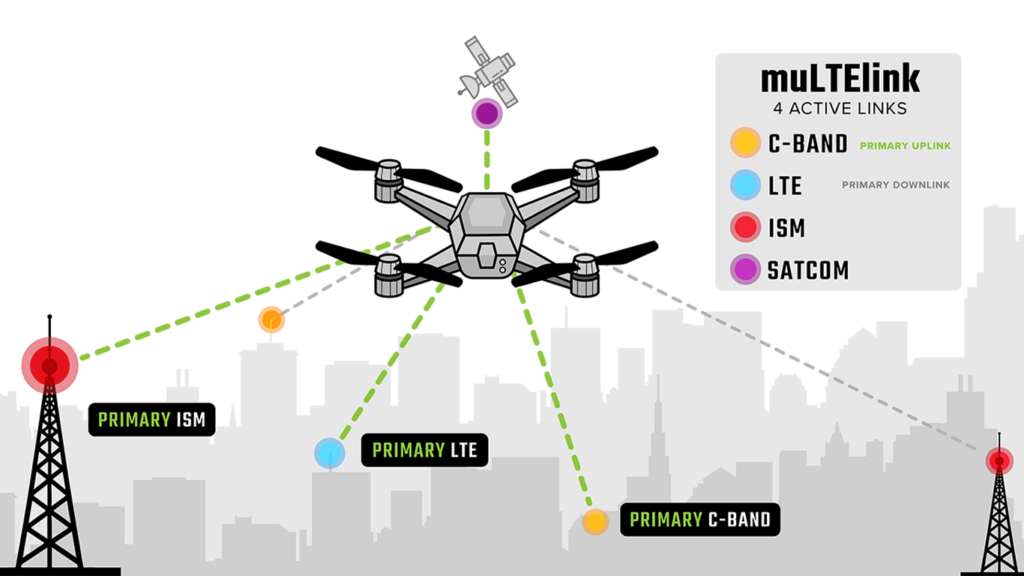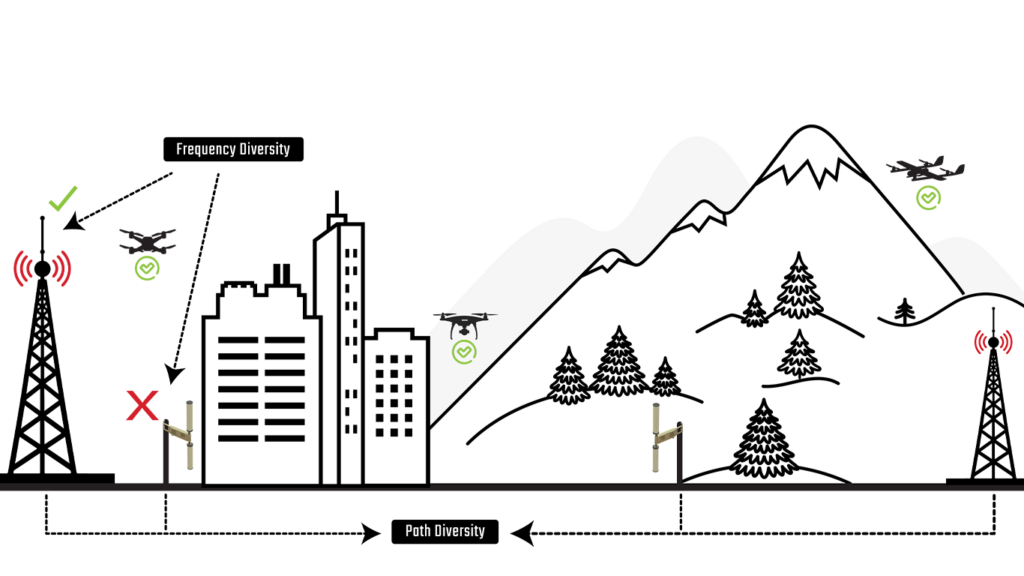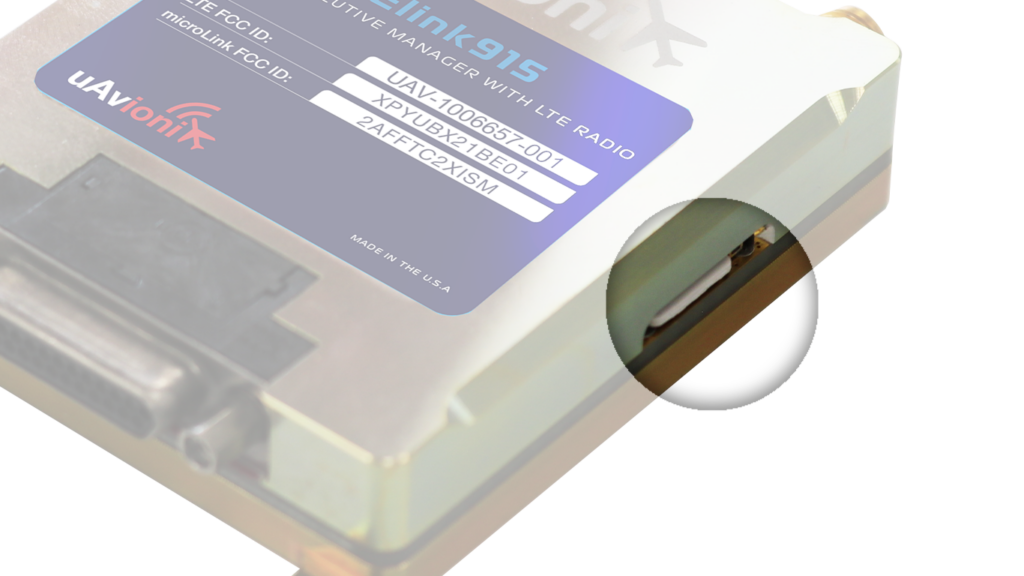Reliable UAS Command and Control
muLTElink is a dual-band airborne radio system that ensures dependable connectivity for unmanned aircraft systems (UAS). Each version of muLTElink integrates LTE and C-Band (5060 MHz) or ISM-band (915 MHz) radios, supporting global operations with seamless compatibility with major autopilots and the SkyLine Cloud Managed communications service. Ideal for complex missions, muLTElink maintains robust communication links essential for operational success.
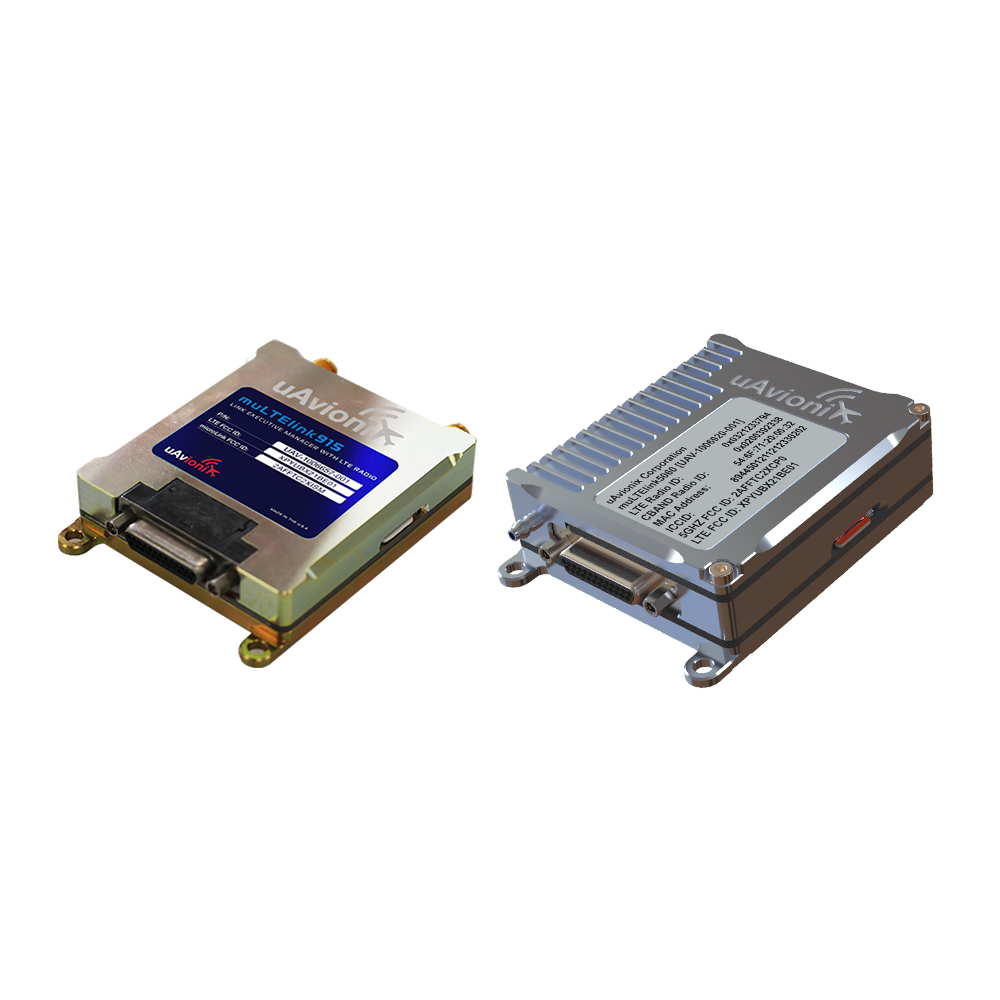
Primary Features
Additional Features
Enhanced Operational Versatility
Power and Size
Compact design, measuring only 19x51x71 mm and weighing 100 grams, suitable for various drone sizes.
Connectivity Without Compromise
Missions require assured Command and Control (C2) and real-time payload data transmission. muLTElink solves this with seamless link arbitration, CNPC/payload isolation, and flexible radio integration.
Diverse Bandwidth Options
Supports various LTE FDD and TDD bands, ensuring wide operational flexibility.
Transparent RS232 Interface
Provides a protocol agnostic interface for autopilot connectivity.
Certifications
Complies with RTCA DO-377A and has pending FCC approvals for communication reliability and safety.
Seamless Integration
Compatible with SkyLink5060 C-Band CNPC radio and George G3 autopilot, ensuring streamlined platform integration.
muLTElink-915
Best for compact platforms where SWaP is a priority. Supports ISM + LTE with payload link integration and dynamic failover.
FEATURES
- FCC Approved 915 MHz (ISM-Band)
- GLobal LTE Capability w/ user accessible nano SIM
- Low-SWaP, 65 grams, 1.7W
- Supports IP-base Payload Transmission
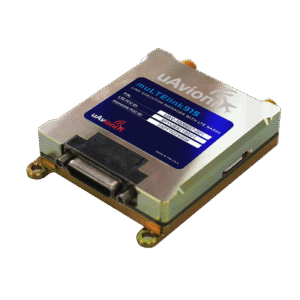
muLTElink-5060
Designed for C-Band operations requiring certifiability. Ideal for FAA-regulated flights or infrastructure partners using ground stations.
FEATURES
- 5060 MHz, meets RTCA DO-377 for Flight-Critical C2 Operations
- Global LTE Capability w/ user accessible nano SIM
- Low-SWaP, 100 grams, 2W
- Supports IP-base Payload Transmission
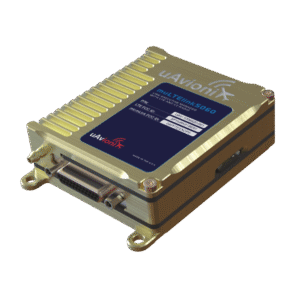
FAQ'S
Knowledge Base
How do I physically install muLTElink on my UAS?
Install the muLTElink system in a location within the airframe that allows easy access to the autopilot and maintains minimal RF coaxial cable length for antenna installation, as longer coax lengths can result in signal loss. Ensure that the antennas are installed in locations that minimize shadowing and electromagnetic interference.
What steps are required to register and activate the muLTElink system?
Registering and activating the muLTElink involves connecting the system to your aircraft’s autopilot via the RS232 serial interface, ensuring the eSIM is activated, and setting up with the SkyLine Cloud Managed BVLOS service. Automatic registration occurs once these connections are established, streamlining the setup process.
Can you explain muLTElink LEM Link switching logic?
The ARS (Airborne Radio System) uses muLTElink Link Executive Manager (LEM) to manage which communication path the aircraft uses as its primary receive link.
How it Works
• Primary signal: 1-second rolling average of incoming user data rate to judge link health.
• Evaluation cadence: Runs every 1 second.
• Confirmation cycles: Switch decisions require confirmation across multiple 1-second cycles (~2–3s effective delay).
• Disqualification threshold: About 1.5s for a radio link to be disqualified.
• Hysteresis: Built-in safeguards against flapping; includes “double-hysteresis” in worst-case transitions.
• Active link criteria: A link is considered active if rxBytesPerSec > 0 on the user data channel.
• Prioritization: When the current active link becomes inactive, chooses an active link with the highest rolling average (if multiple).
Decision & Timing Behavior
• Observed switch latency: ~4s max in momentary dropouts.
• Worst-case behavior: Practical timeout guidance of ~10s used by operators, even though disqualification + hysteresis nominally ~2–4s.
Operational Notes
• Failsafe sensitivity: A GCS failsafe set to <5s may trigger before muLTElink can switch; ~10s recommended.
• Manual link disabling: Not supported in SkyLine software; customers disable radios/antennas physically for tests.
See the Skyline ARS User and Installation Guide for more information.
What are the maintenance requirements for muLTElink radios?
Regularly check the physical integrity of the device and its connections. Ensure firmware and software are updated to the latest versions as released by uAvionix. Regularly test the system to confirm it is functioning correctly within the operational parameters, particularly before and after critical missions.
What common issues might I encounter with muLTElink and how can I troubleshoot them?
Common issues may include connectivity problems or signal interference. Ensure all cables and connections are secure and undamaged. Check for firmware updates that might resolve new issues. For persistent problems, consulting the detailed troubleshooting guide provided by uAvionix or contacting their technical support may be necessary.
Are there specific FAA regulations that need to be considered when using muLTElink for UAS operations?
Yes, the use of LTE and C-Band frequencies requires adherence to specific FAA and FCC guidelines to ensure safe and legal operation. Ensure compliance with FCC Part 15 for ISM bands and Part 87 for aviation-protected bands, and verify that all necessary licenses and authorizations for frequency use are obtained before operation.
Documentation
Manuals & Guides
The following required statement from the Federal Communications Commission (FCC) applies to United States based entities with the exception of direct sales to the U.S. Government and units directly exported by uAvionix:
This device has not been authorized as required by the rules of the Federal Communications Commission. This device is not, and may not be, offered for sale or lease, or sold or leased, until authorization is obtained.
